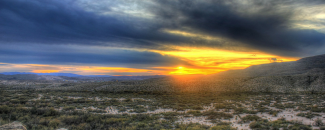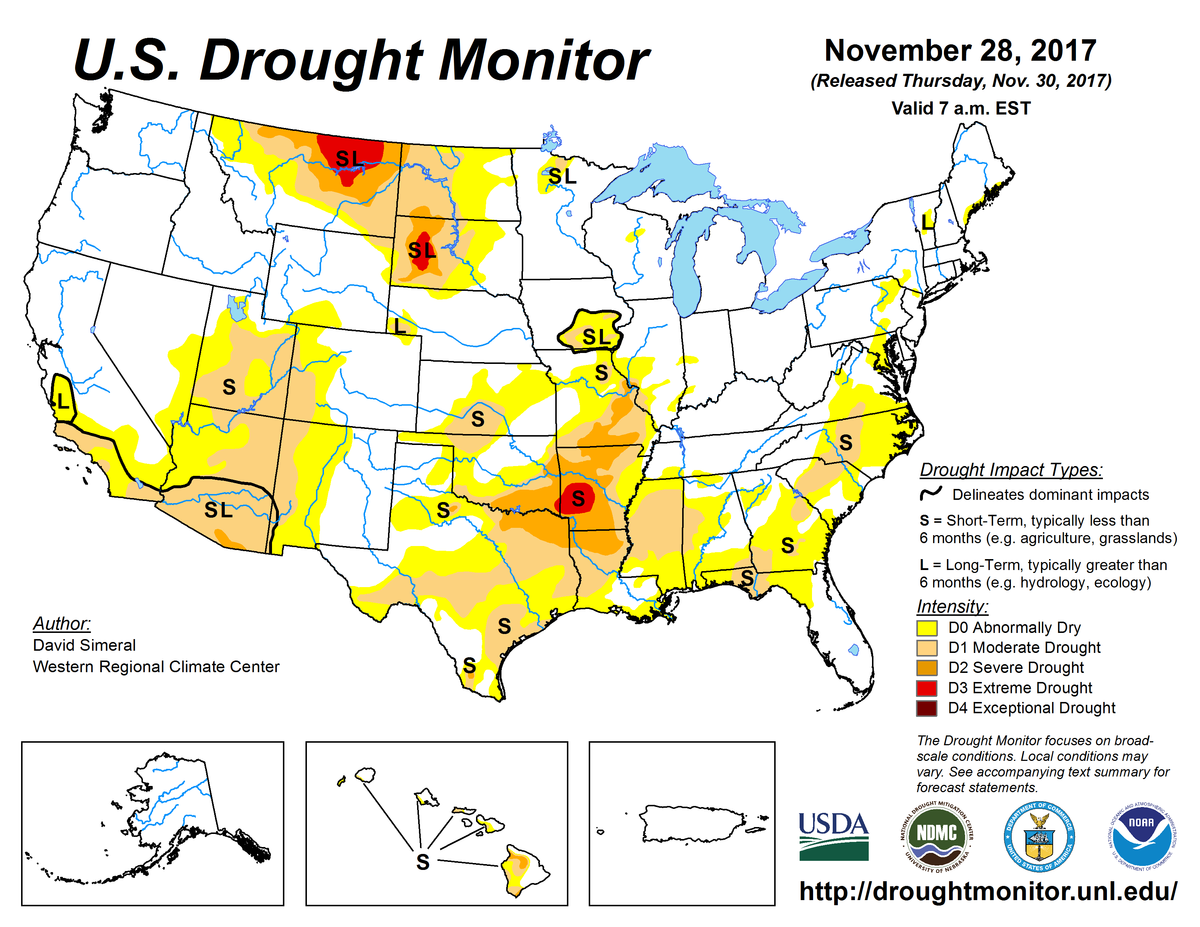
According to the November 28, 2017, U.S. Drought Monitor, moderate to exceptional drought covers 21.1% of the contiguous United States, an increase from last week’s 15.4%. Extreme drought also increased from 0.8% last week to 1.0%. Exceptional drought remained absent from the Lower 48 for a seventh consecutive week.
The atmospheric circulation during this U.S. Drought Monitor week was dominated by an upper-level high pressure ridge over the western contiguous United States and a trough over the East. The ridge kept temperatures warmer than normal across the West and Great Plains, while Canadian air masses plunged southward in the trough across the eastern Lower 48, bringing below-normal temperatures to the Southeast.
Pacific weather systems gave parts of the Pacific Northwest and northern Rockies above-normal precipitation, but the weather systems were dried out or deflected to the north into Canada by the western ridge. Frontal rains gave parts of Florida above-normal precipitation for the week, but the northwesterly flow across the central part of the contiguous United States blocked Gulf of Mexico moisture from moving inland, which kept most of the country east of the Rockies drier than normal. With a mostly dry week, drought and abnormal dryness expanded across the Southwest, southern Plains, and Southeast.
Abnormal dryness and drought are currently affecting over 113 million people across the United States—about 36.3% of the country’s population.

The full U.S. Drought Monitor weekly update is available from Drought.gov.
In addition to Drought.gov, you can find further information on the current drought as well as on this week’s Drought Monitor update at the National Drought Mitigation Center.
The most recent U.S. Drought Outlook is available from NOAA’s Climate Prediction Center and the U.S. Department of Agriculture provides information about the drought’s influence on crops and livestock.
For additional drought information, follow #DroughtMonitor on Facebook and Twitter.



